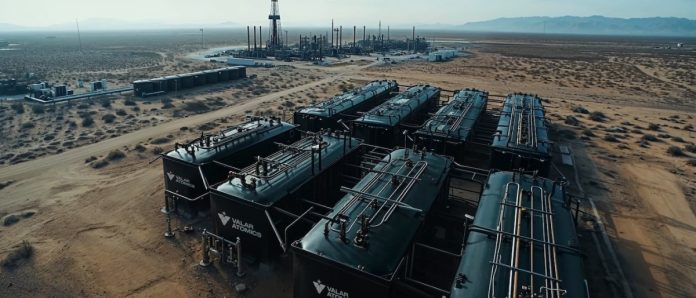Companies developing small modular nuclear reactors (SMRs) have raised more than $1.5 billion in the past year, as tech companies hunger for power to train AI models and governments decide to commit to the industry.
For example, X-energy raised $700 million this month, and Paris-based Newcleo raised $151 million last year, and one would be remiss to not mention the $700 million invested into Oklo, NuScale and Nano Nuclear for similar projects in the U.S.
While nuclear fusion still looks relatively far away, SMRs are today’s hot atomic property. So it’s significant that SMR startup Valar Atomics has raised $19 million in a seed funding round to develop its first test reactor. The financing was led by Riot Ventures, with AlleyCorp, Initialized Capital, Day One Ventures and Steel Atlas participating.
Valar’s SMR technology is based on a helium-cooled, high-temperature gas reactor. These will be built out of a nuclear equivalent of a ‘gigafactory’ (where batteries are built), except Valar calls them ‘gigasites’. By effectively creating a production line of SMRs, Valar hopes to drastically reduce the costs associated with building nuclear reactors, which are traditionally bespoke projects.
Valar’s co-founder and CEO, Isaiah Taylor, told TechCrunch that the constraint on building reactors isn’t the technology as much as how it’s deployed. He hopes Valar’s ‘gigafactory’ approach could fix that by being “industrial” instead of “artisanal.”
The company plans to build hundreds of SMRs at predominantly off-grid sites to power data centers and industrial plants. It has an initial contract with the Philippines Nuclear Research Institute to build a reactor in the country. Under the contract, Valar plans to pilot a test-scale reactor, and build two full-scale reactors before the first integrated reactor comes online.
“We’re going to make the first one, the second one, the third one, and that will organically evolve into a factory,” he said.
Valar’s underlying technology uses helium gas to reach temperatures up to 900°C — triple that of conventional nuclear reactors. This means Valar could also produce hydrogen efficiently and combine it with captured CO2 to create low-carbon synthetic fuels for vehicles and infrastructure.
“If you can get a nuclear reactor that hot, you can produce hydrogen very cheaply, and you unlock all sorts of things. One of those things being synthetic fuels. We want to be able to make that process cheap and make the reactors cheap, too,” said Taylor.
“We designed, engineered, and constructed our thermal test unit in a period of about 10 months. It’s possible — after all, the first nuclear reactor ever was built in eight months, in 1943,” he added.
Taylor, whose grandfather was, coincidentally, a nuclear physicist on the Manhattan Project, dropped out of high school at 16, and went on to study software systems as well as found startups. The company’s technical efforts are led by its chief nuclear officer, Mark Mitchell (the former president of modular reactor firm Ultra Safe Nuclear Corporation (USNC), and leader of the world’s first small modular reactor project at South Africa’s Pebble Bed Modular Reactor). The startup’s team also has several folks from USNC, including its head of mechanical engineering, Willem van Rooyen.
While the company’s plans are ambitious, there seem to be ample tailwinds for such nuclear projects. The U.S.’ Inflation Reduction Act has unlocked private investment into clean energy infrastructure, while China is also investing $440 billion in new nuclear plants. Plus, 14 of the world’s largest banks have expressed support for tripling nuclear energy by 2050.




